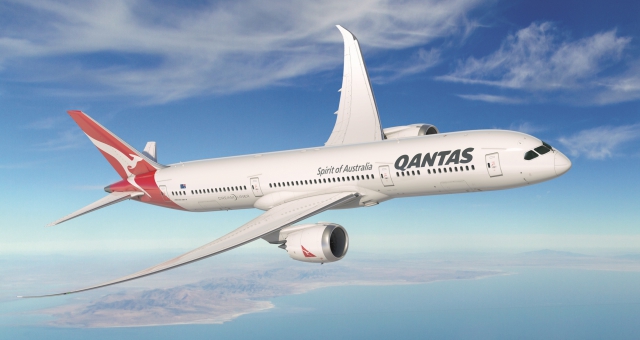Qantas has announced its strongest profit since before the Global Financial Crisis, a $505 million capital return to shareholders and a Boeing 787 Dreamliner order to start a new era for Qantas International.
For the 12 months to 30 June 2015, Qantas reported an Underlying Profit Before Tax of $975 million and a Statutory Profit Before Tax of $789 million.
The underlying result is a turnaround of $1.6 billion compared with financial year 2014, including Qantas’ best ever second half performance, with all segments of the Qantas Group reporting robust profits and returning their cost of capital.
The driving force behind the result was progress with the Qantas Transformation program, which realised $894 million in transformation benefits during the year and saw Qantas meet its target of paying down more than $1 billion in net debt. As a result, Qantas has reached its optimal capital structure – enabling it to resume shareholder returns while continuing to invest in growth and renewal.
Chief executive Alan Joyce said the milestone acquisition of the next-generation Dreamliner for Qantas International marked the scale of Qantas’ turnaround and signalled a new phase of renewal and growth.
“We are halfway through the biggest and fastest transformation in our history,” Joyce said. “Without that transformation, we would not be reporting this strong profit, recommencing shareholder returns, or announcing our ultra-efficient Dreamliner fleet for Qantas International.
“We have reshaped our business for a strong, sustainable future – and because we moved quickly and made tough decisions early, we have strong foundations to build on.”
Qantas will enter a new era of global opportunities, fuel efficiency and passenger comfort when the Boeing 787-9 Dreamliner joins the Qantas International fleet from 2017.
The national carrier will acquire eight B787-9s to gradually replace five of its older Boeing 747s on Qantas International routes and open up a range of potential new city pairs. Four B787-9s will arrive in financial year 2018 and four will arrive in financial year 2019. This will leave the Qantas Group with its six youngest reconfigured B747s.
Qantas will retain 15 further options and 30 purchase rights for additional B787s, with significant flexibility over the timing of delivery should they be exercised.
Qantas will work with its team of internal experts and external designers to develop world-leading cabin interiors for the new Dreamliner. This will add to the aircraft’s unique features, including improved cabin pressure, larger windows and technology to reduce turbulence.
Joyce said the Dreamliner’s advantages for Qantas’ people and customers were hugely exciting.
“This milestone acquisition marks the scale of our turnaround and looks ahead to a new era for our iconic international airline,” he said.
“We’re halfway through the biggest and fastest transformation in our history. Qantas is rapidly growing fitter, stronger, and smarter. These aircraft are a fitting emblem of that evolution – they show that we are revitalised and here for the long haul.
“We have looked closely at every aspect of the Dreamliner and it’s the right aircraft for Qantas’ future.
“The key reason we chose this particular aircraft is its incredible efficiency. Its new technology will reduce fuel burn, cut heavy maintenance requirements and open up new destinations around the globe.
“Because the 787 is smaller than the jumbos it will gradually replace, it gives us the flexibility of having more aircraft without significantly changing our overall capacity.
“Every Qantas aircraft is a symbol of Australia and these aircraft will represent Australian excellence and ambition on a global scale,” he said.
The acquisition of B787s for Qantas International is contained within Qantas’ existing capital expenditure guidance.


